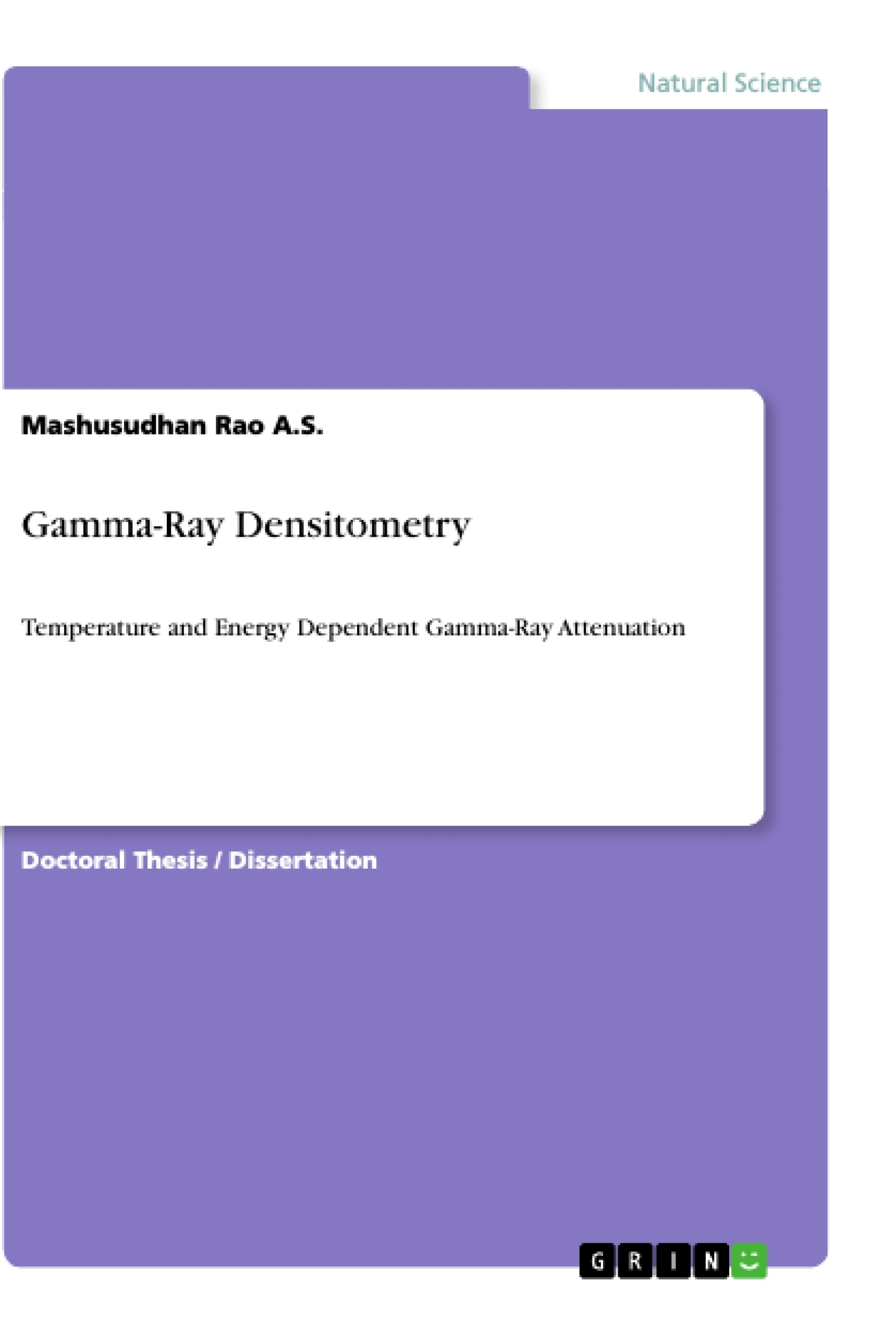This book mainly deals with a systematic study on the determination of multi energetic photon interaction parameters at different γ-energies, density and thermal expansion as a function of temperature of 17 alkali halides using γ-ray attenuation technique.
This technique has been applied to alkali halides for the first time to measure thermophysical properties and linear attenuation coefficient as a function of temperature.
The results of experimental determination of attenuation coefficient, density and thermal expansion at high temperatures are presented in this book. The study of photon interaction parameters of these materials at different photon energies has also been included in this book.
Though there are considerable reports on the determination of thermal expansion of alkali halides, but the studies on variation of density and linear attenuation coefficient with temperature are lacking. The knowledge of photon interaction parameters of different materials is very useful in various fields.
Inhaltsverzeichnis (Table of Contents)
- CHAPTER-I
- INTRODUCTION
- 1.1. General
- 1.2. Experimental methods to determine density
- 1.3. Experimental methods to determine thermal expansion
- 1.4. A review of earlier work on determination of thermophysical properties of materials
- 1.5. Interaction of radiation with matter
- 1.6. Introduction to gamma ray attenuation technique
- 1.6.1. Gamma ray densitometer
- 1.7. Gamma ray detection and recording
- 1.8. Scope of present work
- References
- CHAPTER-II
- EXPERIMENTAL SETUP
- 2.1. General
- 2.2. Block diagram
- 2.3. Principle
- 2.4. General requirements for the setup
- 2.4.1. Gamma source
- 2.4.2. Fabrication
- 2.4.3. Dimensions of lead and stainless steel items
- 2.4.4. Accessories fabricated
- 2.5. Electronic equipment and accessories
- 2.6. Programmable temperature controlled furnace
- 2.6.1. General
- 2.6.2. Programmable controller
- 2.6.3. Operator interface
- 2.6.4. Construction of PTC furnace
- 2.6.5. PTC furnace operation
- 2.7. Sample preparation and mounting
- 2.8. Construction of gamma ray densitometer setup
- 2.9. Installation of gamma ray densitometer setup
- 2.9.1. Installation
- 2.9.2. Alignment for good geometry
- 2.9.3. Standardization of gamma ray densitometer setup
- References
- CHAPTER-III
- MULTI – ENERGETIC PHOTON INTERACTION PARAMETERS OF ALKALI HALIDES
- 3.1. General
- 3.1.1. Mass attenuation coefficient
- 3.1.2. Linear attenuation coefficient
- 3.1.3. Effective and equivalent atomic number
- 3.1.4. Electron density
- 3.1.5. Mean free path
- 3.1.6. Cross-section
- 3.2. A review of earlier work
- 3.3. Objectives
- 3.4. Theory
- 3.5. Experimental
- 3.6. Results and discussion
- References
- CHAPTER-IV
- RESULTS ON THERMOPHYSICAL PROPERTIES OF Li AND Na HALIDES BY Y-RAY ATTENUATION STUDIES
- 4.1. General
- 4.2. A review of earlier work
- 4.3. Sample preparation
- 4.4. Experimental details
- 4.5. Results and discussion
- 4.5.1. LiCl
- 4.5.2. LiBr
- 4.5.3. LiF
- 4.5.4. NaCl
- 4.5.5. NaBr
- 4.5.6. NaF
- 4.5.7. NaI
- References
- CHAPTER-V
- RESULTS ON THERMOPHYSICAL PROPERTIES OF K, CS AND Rb HALIDES BY Y-RAY ATTENUATION STUDIES
- 5.1. General
- 5.2. Sample preparation
- 5.3. Experimental details
- 5.4. Results and discussion
- 5.4.1. KCI
- 5.4.2. KBr
- 5.4.3. KF
- 5.4.4. KI
- 5.4.5. CsCl
- 5.4.6. CsBr
- 5.4.7. CsI
- 5.4.8 RbCl
- 5.4.9. RbBr
- 5.4.10. RbI
- References
Zielsetzung und Themenschwerpunkte (Objectives and Key Themes)
This work investigates the thermophysical properties of alkali halides using a gamma ray densitometer. The study focuses on determining the variation of density, thermal expansion, and linear attenuation coefficient with temperature for 17 alkali halides. The primary objective is to contribute valuable data for various technological applications, as these properties influence other thermophysical properties such as viscosity, surface tension, and thermal conductivity.
- Thermophysical properties of alkali halides
- Density and thermal expansion at high temperatures
- Linear attenuation coefficient
- Gamma ray attenuation technique for thermophysical property determination
- Applications of alkali halides in various fields
Zusammenfassung der Kapitel (Chapter Summaries)
- Chapter 1 provides a comprehensive introduction to the study, discussing the importance of thermophysical properties in various fields, highlighting the lack of previous studies on density and linear attenuation coefficient variation with temperature, and introducing the gamma ray attenuation technique. It also outlines the scope and objectives of the present work.
- Chapter 2 details the experimental setup, including the gamma ray densitometer, the programmable temperature controlled furnace, and the electronic equipment used. It describes the construction and operation of the system, as well as the procedures for sample preparation and installation.
- Chapter 3 delves into the theoretical framework and experimental procedures for determining multi-energetic photon interaction parameters of alkali halides. It discusses various parameters like mass attenuation coefficient, linear attenuation coefficient, effective and equivalent atomic number, electron density, mean free path, and cross-section.
- Chapter 4 presents the results of the thermophysical property studies for Li and Na halides. It analyzes the variation of density and thermal expansion with temperature for each compound, offering insightful discussions and comparisons with previous research.
- Chapter 5 expands the investigation to include K, Cs, and Rb halides, similarly presenting the results of density and thermal expansion measurements and discussing the findings in detail.
Schlüsselwörter (Keywords)
The key concepts and topics explored in this work include alkali halides, thermophysical properties, density, thermal expansion, linear attenuation coefficient, gamma ray attenuation technique, gamma ray densitometer, programmable temperature controlled furnace, photon interaction parameters, and technological applications.
- Arbeit zitieren
- Mashusudhan Rao A.S. (Autor:in), 2014, Gamma-Ray Densitometry, München, GRIN Verlag, https://www.grin.com/document/535416



